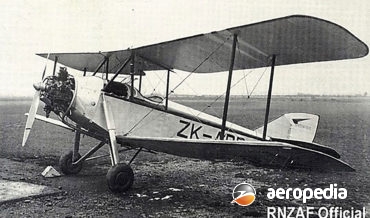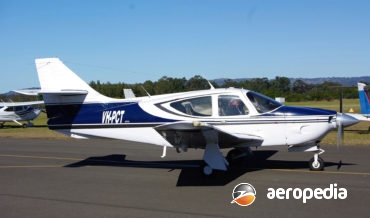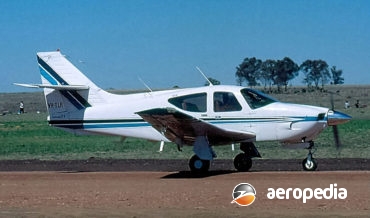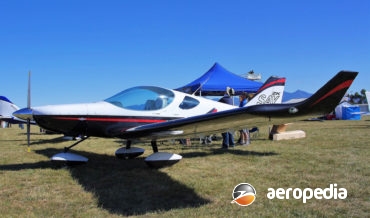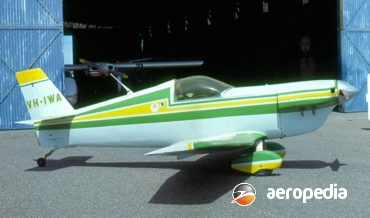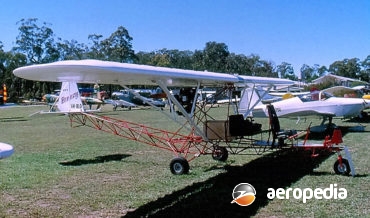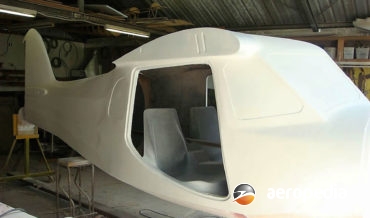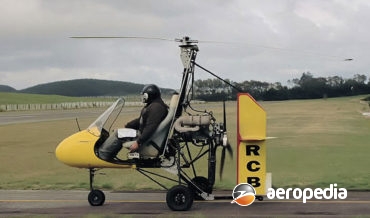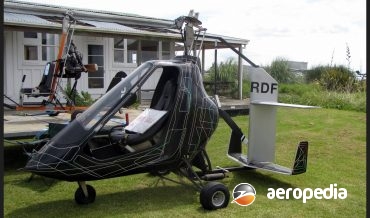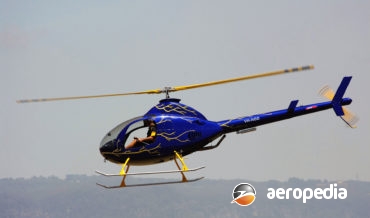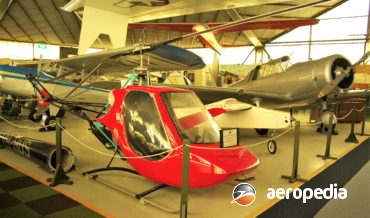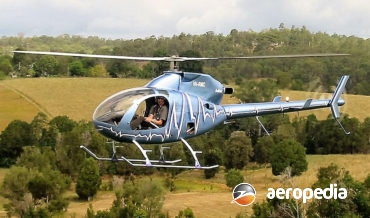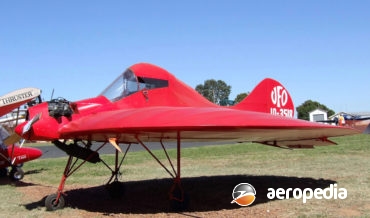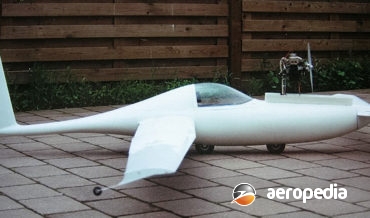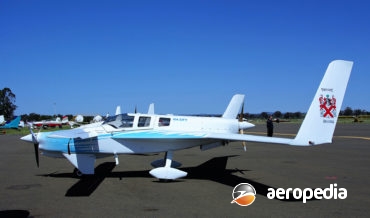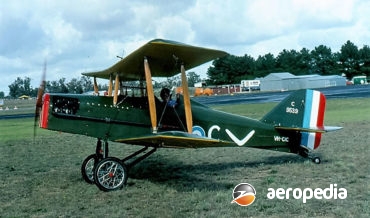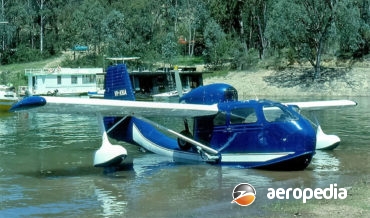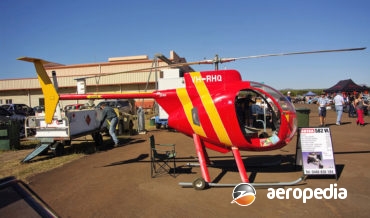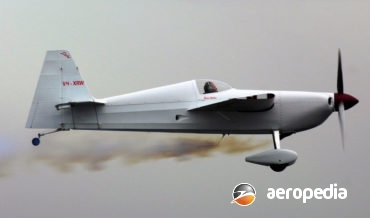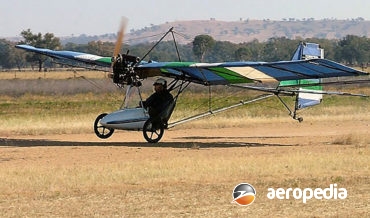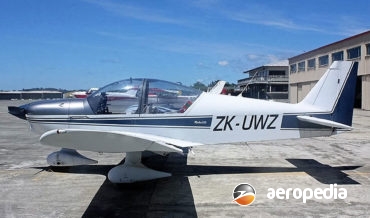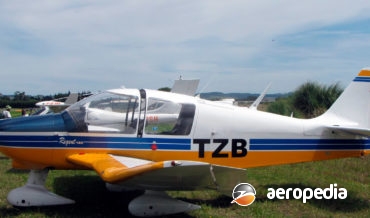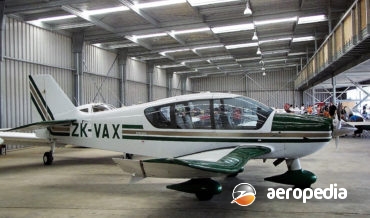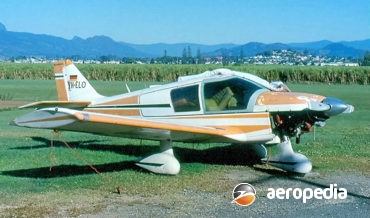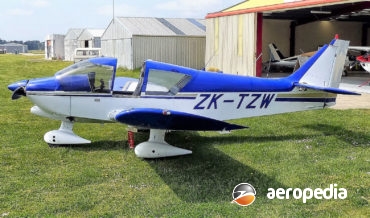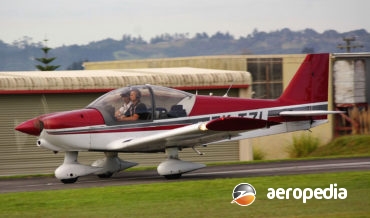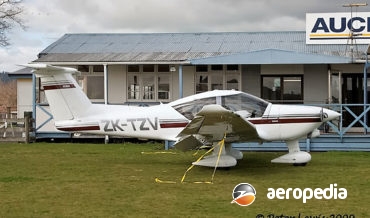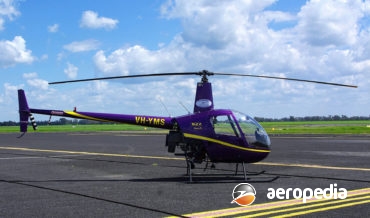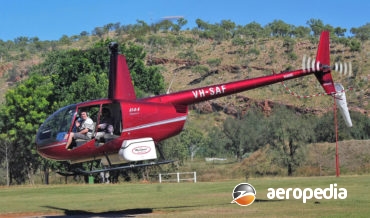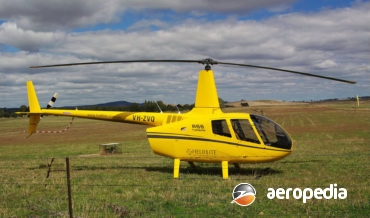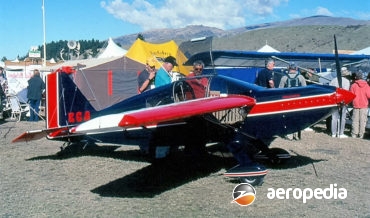David C. Eyre
In 1934 Tubal Claude Ryan created the Ryan Aeronautical Corporation in a location similar to where the old Ryan Aircraft Company had built its designs.
David C. Eyre
- May 8, 2019
The Redwing was designed by John Kenworthy as a light touring biplane, being built by Robinson Aircraft Co Ltd of Stafford Road, Wallington, Surrey, which later in 1931 became Redwing Aircraft Co Ltd.
David C. Eyre
- May 8, 2019
The first of a new series of single-engine monoplanes, the prototype Commander 112 was flown for the first time on 4 December 1970 powered by a 134-kw (180-hp) Lycoming O-360 engine.
David C. Eyre
- May 8, 2019
Over the years the early variants of the Model 112 were perceived as under-powered and had limited load capability and the manufacturer addressed these problems in November 1975 with the Model 114, of which more than 1,100 were delivered.
David C. Eyre
- May 8, 2019
The prototype of the NG4 Stratus [OK-NUR 20] powered by a Rotax 912ULS engine was flown for the first time on 23 March 2008, this being a new type from the Czech Republic designed to meet American and European light-sports aircraft regulations.
David C. Eyre
- May 8, 2019
The design for a single-seat, sporting monoplane of all-wood construction, which became known as the Rollason Beta, resulted from a competition conducted by Rollason Aircraft and Engines in the United Kingdom in 1964.
David C. Eyre
- May 8, 2019
The prototype of the Breezy RLU-1, which is described as a vintage style, was flown for the first time on 7 August 1964 in the United States.
David C. Eyre
- May 8, 2019
The Panther was an American designed strut braced monoplane imported by Rotec Rally Australia of QLD for sale on the Australian market.
David C. Eyre
- May 8, 2019
The Rotec Rally 2 was designed and marketed by Rotec Engineering from about 1980 to 1985. It was a single-seat ultra-light produced in some numbers in the 1980s and had a tubular aluminium framework with a single wing and a pusher engine, it being bolted together and was covered in
David C. Eyre
- May 8, 2019
Rotec is an Australian company which is well known for its production of two radial engines for light aircraft, the seven-cylinder R-2800 and the nine-cylinder R-3600, and the production of throttle body fuel injection units and liquid cooled heads for Jabiru engines etc.
David C. Eyre
- May 8, 2019
Rotor Flight Dynamics Inc of Wimauma, Florida has for some years been producing single and two-seat gyrocopters using the patented Dragon Wing Rotor, the Dominator being designed by Ernest Boyette.
David C. Eyre
- May 8, 2019
The Falcon is a light gyrocopter produced in kit form in the United States and has been produced in two variants, the Falcon single-seater and the Falcon II two seater.
David C. Eyre
- May 8, 2019
B J Schramm has been involved in the designing and marketing of both ready-to-fly and prefabricated components for light helicopters since the 1960s.
David C. Eyre
- May 8, 2019
The Schramm Aircraft Company was formed in 1958 by B J Schramm to market both ready-to-fly and pre-fabricated components for a single-seat light sporting helicopters.
David C. Eyre
- May 8, 2019
The T-62 is a development by K.I.S.S.Aviation of the kit-built Executive 162 helicopter, which is produced by Rotorway International at Chandler in Arizona, to take a turbine engine, a number of examples being completed in the United States.
David C. Eyre
- May 8, 2019
The UFO series of light aircraft was designed by David Rowe, an engineer, at Scone, NSW. The aircraft commenced with a sketch he made of a circular shaped aircraft.
David C. Eyre
- May 8, 2019
The Model 77 Solitaire was designed by Burt Rutan as an entry to the Sailplane Homebuilders Association Design Competition in the United States in 1982 and his design, a single-seat canard aircraft with a mid-wing, won the contest, its unusual layout attracting a lot of interest. For a few years
David C. Eyre
- May 8, 2019
The prototype of the Rutan Model 40 Defiant (N78RA) was designed as a ‘proof of concept’ aircraft and made its first flight on 30 June 1978.
David C. Eyre
- May 8, 2019
The Long Ez is a tandem two-seat, high-performance aircraft of canard configuration designed by Elbert Rutan, and is a development of the well-known VariEze, being somewhat larger overall.
David C. Eyre
- May 8, 2019
This aircraft, marketed by Replica Plans of Chilliwack, British Colombia, was designed as a scaled-down replica of the famous SE-5a fighter of World War I, incorporated modern techniques and a modern American engine to permit the aircraft to be built by amateur constructors.
David C. Eyre
- May 8, 2019
In 1941 the S-12 Amphibian Air Car was built in the United States by Percival H Spencer, he having formed Spencer-Larson Aircraft Corp to build a light amphibian.
David C. Eyre
- May 8, 2019
The Mini 500 single-seat helicopter is one of a new breed of machines aimed at the sporting and farming markets and has been developed by Revolution Helicopter Co of Excelsior Springs in Montana.
David C. Eyre
- May 8, 2019
Mr Mervyn VICtor Richardson (1893 - 1972), founder later of the well known motor mower company, Victa Consolidated Industries, was born at Yarramalong, NSW and was one of the sons of Archibald George Heron Richardson and his wife, Charlotte Martha, nee Griffith.
David C. Eyre
- May 8, 2019
The Sabre was a one-off unlimited-category aerobatic aircraft designed in the United States by Daniel Rihn.
David C. Eyre
- May 8, 2019
Following the success of the Dove a number of companies sought to improve the product to increase performance.
David C. Eyre
- May 8, 2019
In 1984 in the United States Gerald Ritz designed an ultra-light aircraft and commenced to supply plans to the amateur-built aircraft market but shortly after, whilst testing the aircraft was killed due, it is said, to a flaw in the aircraft’s design, this being related to the wing suffering aeroelastic
David C. Eyre
- May 8, 2019
The B1-RD was a single-seat ultralight or minimum aircraft with a framework built of 60661 T6 aircraft grade aluminium.
David C. Eyre
- May 8, 2019
The cost of the modern-day light training aircraft, and the cost of the fuel and servicing, has increased dramatically over the years, and to this end a number of manufacturers have looked at ways and means of reducing costs.
David C. Eyre
- May 8, 2019
In 1970, to meet the requirements of French flying and aero clubs, Avions Pierre Robin at Dijon in France designed and built a new two-seat training aircraft series known as the HR.200, the prototype flying for the first time on 29 July 1971.
David C. Eyre
- May 8, 2019
Following the success of the DR.253 Regent, DR.315 Cadet, DR.340 Major, DR360 Chevalier and DR.380 Prince series of aircraft, all of which were basically of wooden construction, Centre Est, or Robin, introduced the DR.400, construction of the prototype of which began in 1971.
David C. Eyre
- May 8, 2019
Following the success of the DR.253 Regent, DR.315 Cadet, DR.340 Major, DR360 Chevalier and DR.380 Prince series of aircraft, all of which were basically of wooden construction, Centre Est, or Robin, introduced the DR.400, construction of the prototype of which began in 1971.
David C. Eyre
- May 8, 2019
Centre Est Aeronautique was formed at Dijon in France in 1957 to manufacture a series of light aircraft based on Jodel designs.
David C. Eyre
- May 8, 2019
The Aiglon was one of a series of touring monoplanes produced in France in the late 1970s and early 1980s and completed in small numbers, the prototype making its first flight on late 1976 and being known as the R.1180 Aiglon.
David C. Eyre
- May 8, 2019
This series of light aircraft was developed from the Avions Pierre Robin R.2160, and was designed by Robin Aviation in France in 1978 but in 1985 production ceased. Production re-commenced in 1994 after some redesign, which included new electrics and hydraulic brakes, better corrosion proofing etc, and a new, for
David C. Eyre
- May 8, 2019
In 1978 Centre Est continued its design and development of the old Jodel series and produced a new series of touring aircraft known as the R.3000, these being all-metal touring and training aircraft and differed from the earlier designs in having a T-tail.
David C. Eyre
- May 8, 2019
The R-22 light helicopter was designed by Frank D Robinson. The first of two prototypes, which was flown on 28 August 1975, was the result of six years of development work.
David C. Eyre
- May 8, 2019
In 2015 The Robinson Helicopter Co announced it planned to produce a two-seat variant of the R-44 called the Cadet which would be suitable for a wide variety of utilitarian applications, but mainly aimed at the training market.
David C. Eyre
- May 8, 2019
The R-44 is a four-seat development of the very successful R-22, more than 2,000 examples of which had been delivered when the R-44 entered production in late 1992.
David C. Eyre
- May 8, 2019
The R-66 is a turbine powered helicopter developed in the United States. In March 2007 Frank Robinson announced his company would produced a turbine variant of the R-44, the prototype being shown at the company’s facility fitted with a new lightweight Rolls Royce 300 engine, the aircraft making its debut
David C. Eyre
- May 8, 2019
The Rans series of aircraft is produced by Rans Inc at Hays in Kansas, USA.
David C. Eyre
- May 8, 2019
Recent Comments
Archives
Categories
- No categories
Categories
- No categories
Latest Posts
Newsletter


